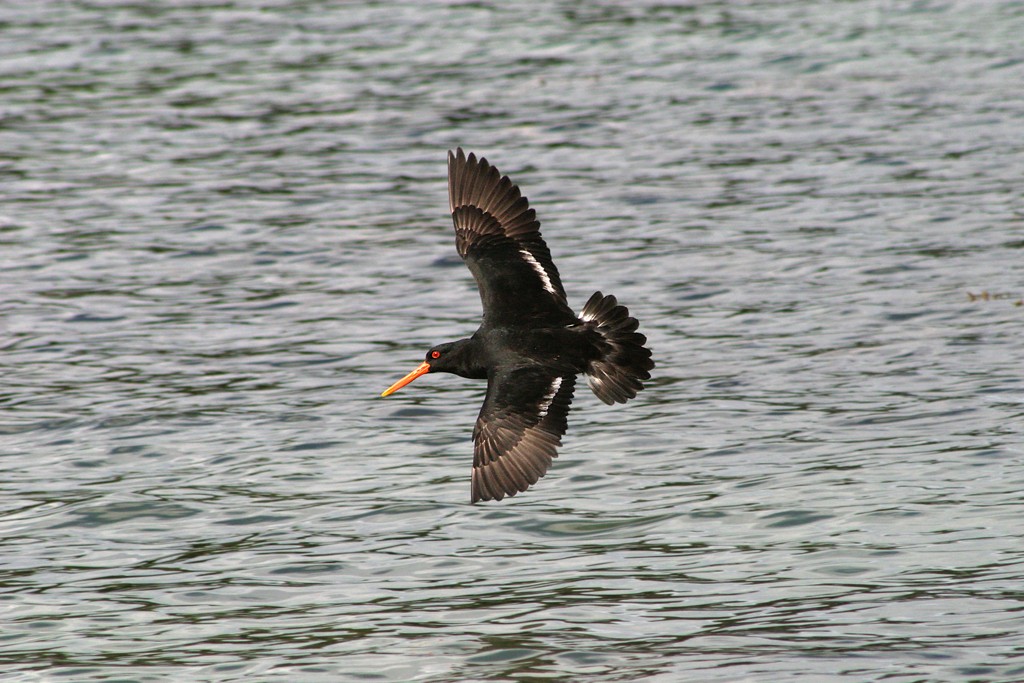Variable Oystercatcher
A species of Oystercatchers Scientific name : Haematopus unicolor Genus : Oystercatchers
Variable Oystercatcher, A species of Oystercatchers
Botanical name: Haematopus unicolor
Genus: Oystercatchers
Content
Description People often ask General Info
Description
"Variable" refers to the frontal plumage, which ranges from pied through mottled to all black. They are polymorphic meaning they have different genetic variants. These color differences are attributed to the latitude of the habitat, where the northernmost oystercatchers have significantly more white on their bodies than those of southern origin. All Stewart Island variable oystercatchers are black. They have pink legs, an orange eye ring and orange-red beaks. Similar to a needle in shape, the bill is thin and long, and darkens to a deep red color during the breeding season. Males are around 678 grams and females slightly larger at around 724 grams. Length of individuals range from 42 to 47 cm from beak to tail and have a short, sturdy body with a thick neck. Variables can be identified as they are slightly larger than the South Island pied oystercatcher (SIPO are around 550 grams). Occasionally completely black, but if they are pied (black and white) they can be easily confused with SIPO. The variable species has less definition between the black and the white area, as well as a mottled band on the leading edges of the underwing. Variables also have a smaller white rump patch which is only a band across the base of the tail rather than a wide wedge shape reaching up to the middle of the back as in the SIPO. When mottled they are sometimes called "smudgies". While both sexes have the same plumage colorations and appear visually similar, there is some body dimorphism and female oystercatchers tend to be slightly larger in size. 
Size
49 cm
Colors
Black
Life Expectancy
20 years
Nest Placement
Ground
Feeding Habits
Variable Oystercatcher consumes molluscs, crustaceans, worms, and small fish, favoring bivalves opened by stabbing and twisting with its bill, or hammering. It forages by sight or probing, primarily around low tide, and searches for earthworms inland post-rainfall.
Habitat
Variable Oystercatcher thrives predominantly along coastal areas within 30 km of shorelines, favoring sandy beaches and estuaries for nesting and breeding. They adapt by nesting between rocks or in sand dunes, sometimes using seaweed lining. Outside breeding seasons, variable Oystercatcher's range expands to include various coastal terrains and occasionally pastoral fields post-rainfall, while typically avoiding gravelly shores.
Dite type
Aquatic invertebrate eater
People often ask
General Info
Feeding Habits
Bird food type
Species Status
Throughout its entire range, H. unicolor is currently estimated to have 4000-5000 individuals total. Although this number appears low, the species is considered of least concern ecologically and noted to be in acceptable health. While no conservation efforts are in effect, other pieces of legislation that protect threatened and endangered coastal birds provide some additional resources for the oystercatchers as well. The species has increased in population over the past several generations and is expected to continue rising. H. unicolor has the national conservation status of "At Risk, Recovering" but is regarded as being "Regionally Vulnerable" in the Wellington region. 
Scientific Classification
Phylum
Chordates Class
Birds Order
Shorebirds Family
Oystercatchers Genus
Oystercatchers Species
Variable Oystercatcher 